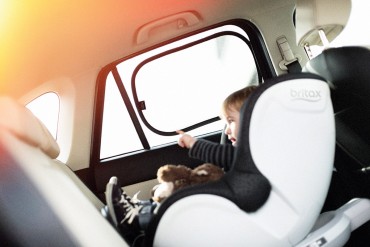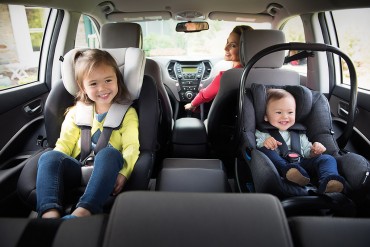Kevin Clinton, head of road safety at the Royal Society for the Prevention of Accidents (RoSPA), offers tips and advice to parents buying their first car seat
Buying a car seat for your little one is one of the most important purchases you will make as a parent. A properly fitted car seat is designed to secure your baby and absorb impact force.
A seat belt on its own will not properly fit your child until they are at least 135cm (4’6”) tall, although it’s best to wait until they are 150cm (5’) or taller. It’s illegal to carry your baby on your lap while in the car.
Don’t worry if you’ve found the process head-achingly confusing; choosing one isn’t straightforward, particularly after the introduction of regulation ‘i-size’ child seats last spring.


- If the seat carries an “E” mark label (an E followed by a number) then you know it has been passed for use in Europe. Seats that meet the current regulations will also have an “R44” or “R129” label. All new seats from reputable retailers will carry these – if you see anything other than these markings then beware!
- There are many different types of child seat available, but the important thing to remember is that the seat must be suitable for your child’s weight and size, and be correctly fitted in your car according to the manufacturer’s instructions.
- Babies must be carried rearward-facing in a “Group 0” seat – for babies weighing 0-10kg (up to 22lbs); a “Group 0+” (more common) is for babies weighing up to 13kg (29lbs), or an i-size seat. The latter is based on the child’s height rather than weight, and is designed to keep children rearward-facing until they are at least 15-months-old, and to provide better protection from side impacts.
- Once your baby exceeds the maximum weight for the seat, or they are at least 15 months old if they are in an i-size seat, you can either move them into a forward-facing seat or use a combination seat that starts rearward-facing and becomes forward-facing.
- As well as making sure the seat is suitable for your car, it is equally important to make sure it can be fitted securely. Child seats are either fitted using the car’s seat belts or, if it’s an ISOFIX or i-Size seat, by being slotted into the ISOFIX points built into the car. Not all child seats fit into all cars, so check before you buy.
- Do your research – take time to look through manufacturers’ catalogues and websites, and assess seats in shops. Magazines such as Which? and What Car? conduct tests, and you can also check the European New Car Assessment Programme website (euroncap.com) to see if your car model has been tested. If possible, choose a seat that scores highly in these tests.
- Think about how you will use the seat. For example, if you are likely to be constantly taking it in and out of the car, a lighter seat, or one with a base that remains in the car, might be preferable.
- Ask the retailer if you can try your chosen car seat out before you buy. Only buy from a retailer with staff trained in fitting.
- Avoid buying online or by mail order unless you are 100 per cent sure that the seat is suitable for your child and will fit your car.
- Never buy a second-hand seat. You cannot be certain of its history – it may have been involved in a crash even if it looks fine, or it may have internal damage that is not visible to the naked eye. Quite often instructions will be missing, and second-hand seats are likely to be older and not designed to current standards.
- Finally, when securing your baby, remember to remove coats or pramsuits first – the harness needs to be close enough to baby’s body that you can only fit two fingers underneath the straps. Any more than this will affect the seat’s ability to restrain baby effectively in the case of a collision.
For more information see our website, www.childcarseats.org.uk, which has all the information on types of seat, choosing and using seats, fitting, the law, and related issues such as carrying other people’s children.






NO COMMENT